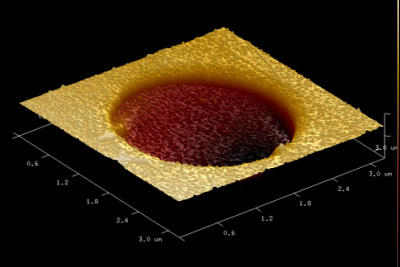Graphene
|

Graphene is a two-dimensional material made up of carbon atoms arranged in a honeycomb pattern. This atomically-thin sheet was first isolated in 2003 at Manchester, and since that time there has been a worldwide effort to study its properties and applications.
Notably, graphene is extremely strong and stiff. It is anticipated that one of the first commercial uses of graphene is as a component in composite materials, exploiting its remarkable properties to reinforce polymers and other industrially-useful materials.
Even before graphene was first synthesized in the laboratory, it was realised that it would have exceptional electronic properties. For example, electrons travel through the material as though they had no mass, and are carried for long distances before scattering. Much of the research focus has therefore been in trying to understand and optimise these properties.
As well as being the thinnest, stiffest, and strongest material known to date, graphene is remarkably versatile in its processability. It can be grown over large areas, transferred onto arbitrary substrates and patterned down to the nanometre-scale. This gives great potential for the application of graphene in nanoelectromechanical systems, which aim to explore the behaviour and performance of mechanical devices in the nanometre regime. By reducing device dimensions, these systems demonstrate increased resonance frequencies and lower effective bending stiffnesses, thereby improving force and mass sensitivity.